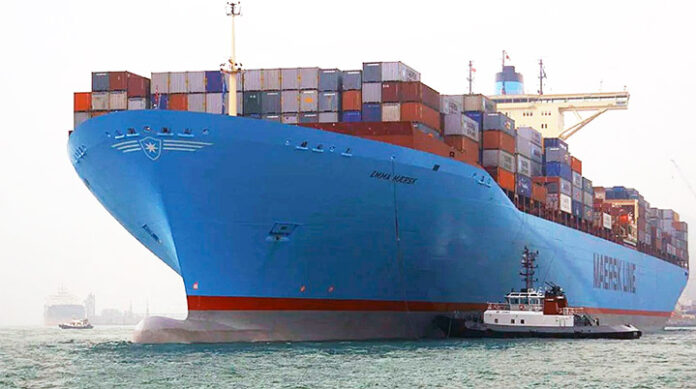
-
Large ships are dominating order books, and the trend is expected to continue, according to BIMCO in a market report
-
The average container ship has doubled in size to 4,580 TEU since 2006
-
Ships with a capacity of more than 12,000 TEU has accounted for 51% of the fleet’s capacity expansion
Large ships are dominating order books, and the trend is expected to continue, according to BIMCO in a market report.
The average container ship has doubled in size to 4,580 TEU since 2006, the report said, and ships with a capacity of more than 12,000 TEU has accounted for 51% of the fleet’s capacity expansion.
Today, just 626 ships provide 36% of the fleet’s capacity, the report added.
In August of 2006, the Emma Maersk was the largest container ship in the world at 40 meters long and 56 meters wide. It had a capacity of 14,000 TEU when delivered. Previously, the largest ship had a capacity of 9,500 TEU, and it had been delivered just two months earlier.
Much later, the Post Panamax category of container ships was created. They have a capacity of more than 17,000 TEU and are too large to fit even the new Panama Canal locks which opened in 2016.
The largest of the post-panamax vessels have a capacity of 24,000 TEU.
Slightly smaller ships were also developed alongside the giants, known as Neo Panamax, with capacity ranging from 12,000 to 17,000 TEU. They can transit the new Panama Canal locks.
The Neo and Post Panamax ships have proven to be friendlier to the environment, reducing not only cost but greenhouse emissions as well, BIMCO said.
By comparison to the older 10,500 TEU ships, the very large ships are 25% cheaper to build, and bunker consumption and greenhouse gas emissions are 25% lower per TEU.
The very large ships have also meant that service frequencies have not developed as they otherwise would have. Still, as the fleet now consists of 68% more ships than in 2006, liner operators are still able to expand service frequency and coverage even when factoring in that sailing speeds have reduced significantly during the period, BIMCO said.
The trend towards larger ships will not end anytime soon. Neo Panamax and Post Panamax ships contribute nearly 70% of the capacity on order and they will continue to drive growth in the fleet, BIMCO said.
By the end of 2025, the average container ship will be larger than 5,000 TEU and the Neo and Post Panamax ships will comprise more than 40% of the fleet’s capacity.




